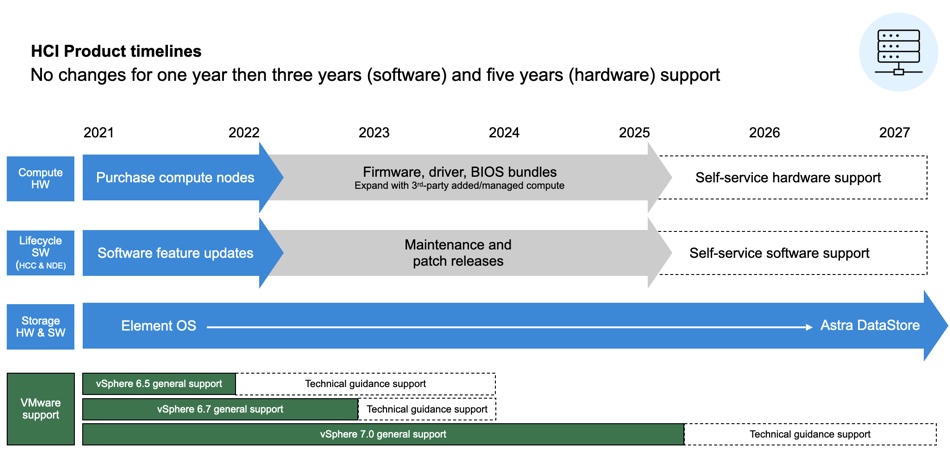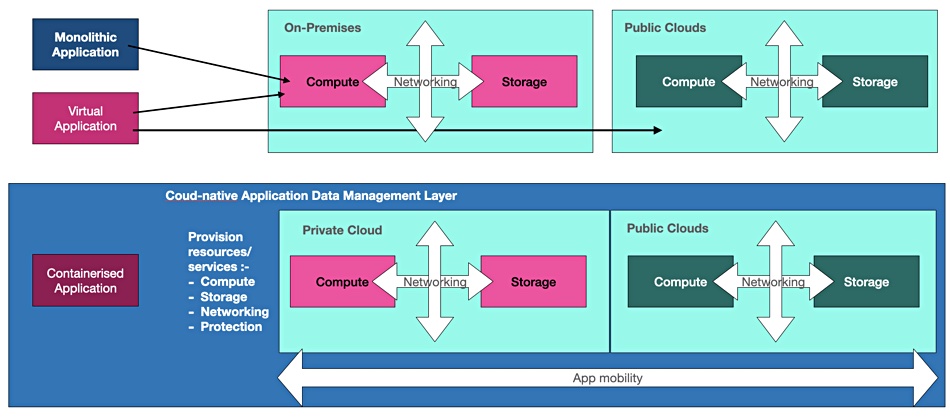NetApp is waving goodbye to the NetApp HCI appliance, launched only in 2017. The data storage vendor wants customers instead to join it in the hybrid cloud, using its software-only Project Astra. The company said it will reveal more details about the Kubernetes-focused project in coming weeks.

Eric Han, a product management VP at NetApp, told us: “The key thing here is we’ve seen HCI as important in the market when we started, but it’s a piece in the market that customers no longer need because it was meant to move people to the [hybrid] cloud and customers can do that without an appliance now.”
.

HCI and hybrid cloud
Han said the main focus for NetApp HCI is to help customers move applications to the hybrid cloud. But it has become clear that the application movement will take place using containers and Kubernetes on commodity hardware. “Application data management is the key next step in the Kubernetes evolution.” And this is why Astra is to become NetApp’s hybrid cloud enablement product, with Han saying the company will “double down on the investment.” We can expect this software-defined Astra story to be filled out with future infrastructure and platforms.
Application data management for hybrid clouds entails running and moving in and between private (on-premises) and multiple public clouds, making the boundary porous to containerised apps. As we see it, the application data management layer provisions apps with compute, storage and networking resources and also protection services.

Han explained: “With containers, customers can now build with one operational playbook. And they can run in one public cloud, a second public cloud, and they can run on premises. That’s something that we haven’t had in the industry. It’s what Kubernetes gives us.”
It’s also an opportunity to bring NetApp’s data management to more customers through an Astra-managed Kubernetes portal.
We see the NetApp Data Fabric concept evolving towards a view of a unified hybrid cloud, a single app enablement, execution and protection space with containerised apps and their resources moving freely between private and public clouds.
NetApp HCI
NetApp HCI (hyperconverged infrastructure) launched In June 2017 as a set of compute servers and a separate SolidFire Elements all-flash storage nodes. This was the disaggregated HCI style, also espoused by HPE with its Nimble dHCI product, and Datrium, since bought by VMware for disaster recovery tech. The disaggregated HCI competitive advantage was the ability to independently scale compute and storage capacity thus better fitting application workloads.
This did not become mainstream. Instead, disaggregated HCI became an adjunct to the massively bigger pure HCI market, which is dominated by VMware VSAN systems such as Dell EMC’s VxRail, and Nutanix.
The SolidFire Elements software was made available separate from NetApp hardware in October last year. This paved the way for the HCI appliance hardware to enter end-of-life.
The SolidFire arrays continue unchanged with support for third party servers and the existing long-term roadmap.
A year from now, the NetApp HCI appliance will no longer be available. In this year critical new functionality and critical fixes will be implemented. From year-end, customers will get three years’ software maintenance and five year’s hardware maintenance.








